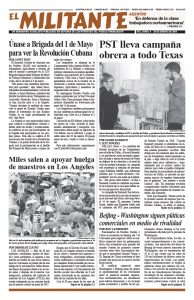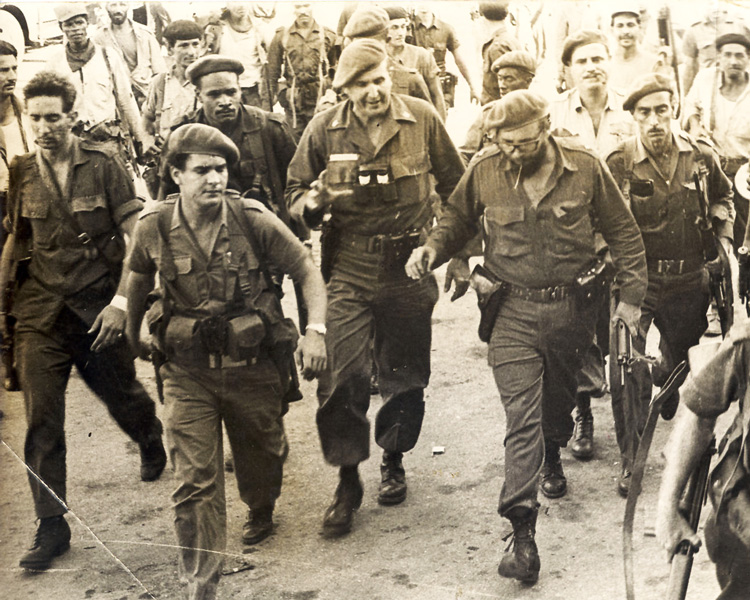Cuban revolutionary leader José Ramón Fernández died Jan. 6 at the age of 95. He commanded the main column of the revolutionary Cuban forces that repelled the CIA-organized invasion at the Bay of Pigs in April 1961 and later held a wide variety of leadership positions.
His personal history of discipline, honesty, tact and dedication to the revolutionary movement from the moment he joined with those fighting to overturn the U.S.-backed dictatorship of Fulgencio Batista speaks volumes about the strengths of the Cuban Revolution. And it helps explain why the U.S. capitalist rulers continue to fear its example.
Fernández, who rose to the rank of first lieutenant in the Cuban army before the revolution, was one of a number of army officials who rankled at the coup that brought Batista to power. Fernández recalled in a 1999 interview with the Cuban newspaper Trabajadores how he and others worked to convince fellow officers to join a conspiracy to overthrow Batista.
“We told them that the bloodstain and all the hatred of the people falls on us, even though we were not the ones who initiated the March 10 [coup],” he said, “nor were we backing by force any type of actions in favor of illegal activities such as smuggling, gambling, prostitution, vices in general, fraud, theft of the public treasury and all those blots on that society that were exacerbated with the coming to power of Batista.”
The April 4, 1956, revolt against Batista by los puros — the pure ones as Fernández and the other anti-Batista army officers were known — failed. He was arrested, court-martialed and tortured. Eventually he was sent to the Isle of Pines where he met members of Fidel Castro’s July 26 Movement and other opponents of the dictatorship.
He was won to the political perspectives of the July 26 Movement and helped them organize their own battalion within the prison, becoming their military instructor.
When news reached the prison that Batista had fled Cuba on Jan. 1, 1959, in the face of the advancing Rebel Army and revolutionary upsurge across the country, Fernández and other imprisoned July 26 Movement leaders took over the prison. They released the political prisoners and quickly assumed military and political command over the entire Isle of Pines.
Fernández flew to Havana the next day where Fidel Castro asked him to head up a school for cadets to train Cuba’s new revolutionary armed forces. Fernández at first said no. He told Castro he had already gotten a new job as a manager of a sugar mill.
Fernández describes what happened next. “Fidel, a lot of times when he’s thinking, he’s like a moving volcano. He took a few steps, he stroked his beard and then he pointed and said, ‘You’re right, you go off to the sugar mill and I’ll go write a book about the Sierra and the revolution, and the revolution can go to hell,’ and he just looks at me. I thought about it for a few seconds and replied, ‘Where did you say you want me to go?’” Fernández never looked back.
He describes how he was assigned to lead the defense of the revolution at the Bay of Pigs. “Girón meant participating with my own hands in the defense of the revolution and socialism,” he said. “It reinforced my conviction that my destiny had been fused forever with the destiny of this heroic people.”
Fernández held many leadership positions over the years. He served as a member of the Central Committee of the Communist Party from 1975, vice minister of the Revolutionary Armed Forces from 1968 to 1970, minister of education from 1972 to 1991, and vice president of the Council of Ministers from 1978 until his death. He served as president of the Cuban Olympic Committee from 1997 until October 2018, when he was elected honorary life president.


